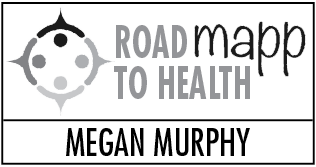Editor’s Note: MAPP, Mobilizing for Action through Planning & Partnerships, is a local coalition that aims to use and build upon our strengths to improve our individual, family and community health. Health is defined broadly to include cultural, economic, educational, environmental, mental, physical and spiritual health.
W
hen it comes to creating a healthy, resilient community, there is one term that is even more important than economic capital. It’s social capital. Relationships, connections and networks are what truly give a community strength to withstand anything the outside world can throw at us.
So how do we connect? There is no better way to answer this question than to ask someone who is new to town. So I asked the question to Paige Meadows, the new VISTA volunteer working with MAPP. Paige and I have some things in common, like how I love networking around this community and how his job is to strengthen networking and collaborating around this community.
Then there are aspects where we are at different ends of the spectrum. I have lived here for 15 years and Paige just got here a couple of months ago. I am completely at home in small towns and Paige comes to us from Charlotte, N.C., where there are more people than the whole state of Alaska.
Imagine squishing all Alaskans into 300 square miles instead of 663,300 square miles. And Paige notes other differences from his hometown. The medium income in Charlotte is around $40,000 whereas it is about $70,000 in Alaska. The percent of people in poverty is almost twice as much in Charlotte as here.
We can always find differences. Differences are how we define “us” and “them.” The beautiful thing about connection is that it brings in the color to this black and white world of us and them. Finding similarities we share is part of connection, but accepting differences makes these connections real.
At the community level, my favorite example of this kind of connection was with the Homer Playground Project (HoPP). Karen Hornaday Park transformed in just eight days with all the different people HoPP organized together. People from all walks of life, with different stories and backgrounds, all worked on the shared vision of creating something wonderful for kids. All the differences are what makes our park so unique, but the shared vision is what actually got it built.
Paige didn’t experience that in Charlotte. He says that there you don’t smile at people on the street, you mind your own business. But he also says that they are much better than Homerites at connecting electronically. Since Paige is used to going online to connect, his impression of Homer is that it is not well connected.
Which is funny because I am always trying to think of ways to get Paige to meet more people so he can be more connected. This is partly generational. I’m old school in the way I network. I like meetings and potlucks. Paige got his college degree online in a city where the median age is 33. He is much more used to texting and connecting through Facebook and Craigslist.
However we connect, online or in person, nurturing community-level connection is vital for resilience. Studies have shown that neighbors are often the first on the scene of an accident, not the EMS, so knowing the strengths and skills of your neighborhood can only build up the strength of your own security. That is social capital.
Paige likes that Homer has an abundance of things to do and ways to connect to the community. There are tons of events happening all the time, music and art, and plenty of outdoor activities. What is your story? What do you like to do? How do you connect? Rather than financial capital, the question is how you build your social capital. What do you do to build you social savings account?
Connections aren’t just something that happens on the community level. All of these stories and questions also play out in our personal relationships. How do you strengthen your connections to other individuals in your life? What is your story? Do you prefer to connect quickly online or hang out for hours at the coffee shop? How do you nurture these connections?
But there is another level of connection as well. All connections start with the individual, from a base of connection to self. What is your story? What do you like to do? How do you give time to yourself? What is your form of self-care?
Imagine if everyone in the community was working to support all these connections at all of these levels. Wouldn’t that be a much better discussion to have buzzing online and in those coffee shops than the latest Hollywood or Capitol Hill gossip?
Working together to make a more resilient and connected community takes all of us participating. Join in that community conversation. Building social capital is not as tangible as building financial capital, but it is just as important. And it is easy to share, no matter your story.
Kyra Wagner is the coordinator of Sustainable Homer and a member of the MAPP steering committee.


